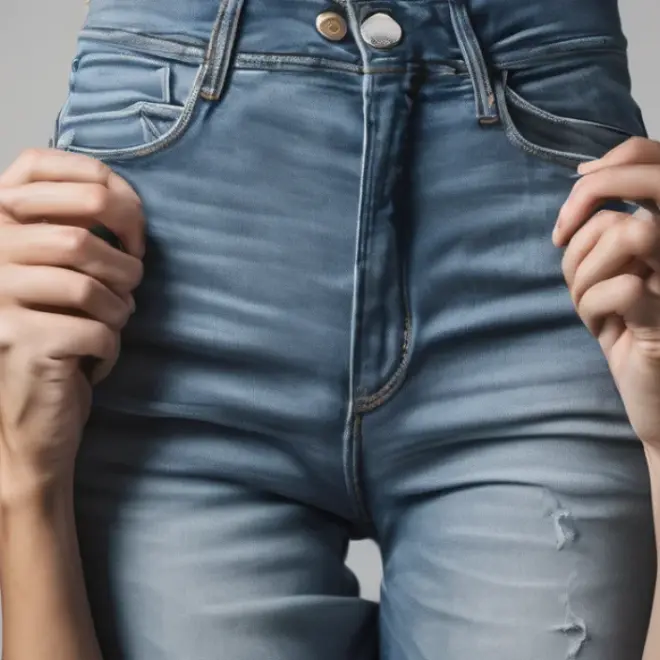Short on time and need to fix those baggy mom jeans? Learn how to hem mom jeans with this easy DIY guide. You’ll get perfectly cropped denim in no time with just a few basic tools. Get ready for a style upgrade!
Mom jeans are a staple, but sometimes they’re just a little too long. This can make them look sloppy or feel uncomfortable. Don’t worry, you don’t need to be a sewing expert to fix them. With some simple tools and a little patience, you can easily adjust the length of your favorite mom jeans to fit you perfectly. Let’s get those jeans looking just right!
Why Hem Your Mom Jeans?
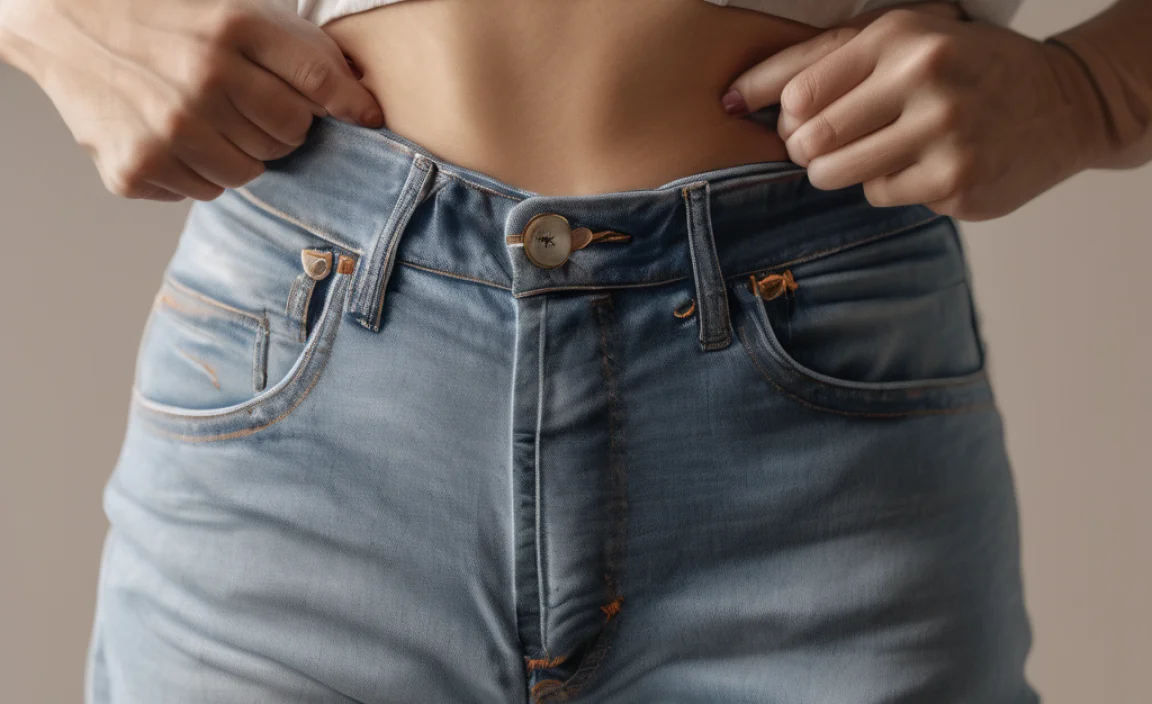
Mom jeans have a unique vintage charm, but their relaxed fit can sometimes lead to excess fabric pooling around your ankles. This can make your legs look shorter, your shoes feel buried, and generally just not achieve the polished look you’re going for. Hemming them yourself is a fantastic way to:
- Achieve the perfect length for your height and shoe choice.
- Give your jeans a modern, tailored appearance.
- Revitalize a pair of jeans that are otherwise great but just too long.
- Save money by doing a simple alteration at home instead of going to a tailor.
What You’ll Need: Essential Tools for Hemming

Getting your mom jeans to fit perfectly doesn’t require a professional sewing machine or expensive equipment. Here’s a breakdown of what you’ll need:
Basic Sewing Kit Essentials:
- Fabric Scissors: Sharp scissors designed for fabric make clean cuts.
- Measuring Tape or Ruler: Essential for precise measurements.
- Fabric Chalk, Pencil, or Disappearing Ink Pen: For marking your hem line clearly.
- Pins: To hold the fabric in place while you sew.
- Needle and Thread: Choose a thread color that matches your jeans or a contrasting color for a visible stitch, depending on your desired look. For durability, a strong polyester thread is recommended.
Optional but Helpful:
- Sewing Machine: If you have one and are comfortable using it, a machine can make the process faster and create a more durable seam.
- Seam Ripper: Useful for undoing mistakes or carefully removing the original hem if you want to recreate it.
- Iron and Ironing Board: To press seams flat for a crisp finish.
- Hemming Tape (Fusible Web): An alternative to sewing, this iron-on tape dramatically simplifies the hemming process for a no-sew option.
Understanding Hemming Techniques for Mom Jeans
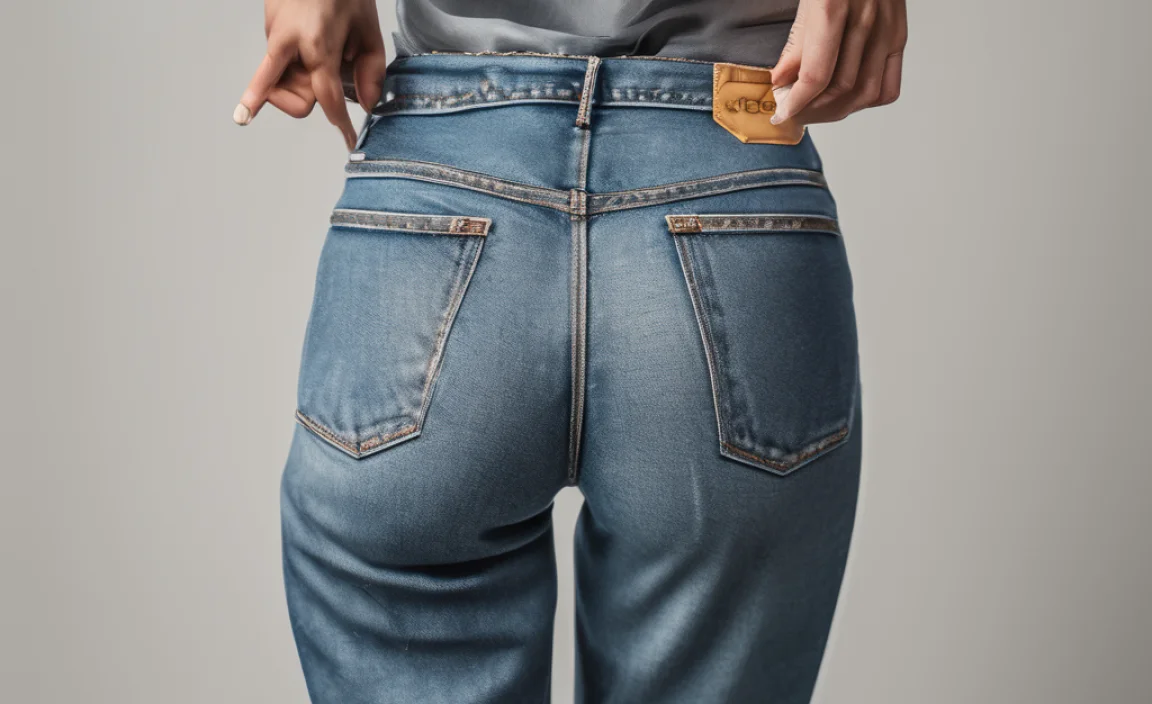
There are several ways to hem your mom jeans, each offering a slightly different look and effort level. For mom jeans, the goal is often to maintain a casual, slightly rugged aesthetic. Here are some of the most popular and effective methods:
1. The Classic Double Fold Hem (Sewn)
This is the most traditional and durable method. It involves folding the raw edge of the fabric twice to create a clean, finished edge that won’t fray. This method is great if you want your hem to look neat and last a long time.
2. The Single Fold Hem (Sewn)
Quicker than a double fold, this involves folding the fabric just once. It’s suitable for fabrics that don’t fray excessively or if you prefer a minimal hemline. It’s a good option for a less structured look.
3. The No-Sew Hem (Using Hemming Tape)
This is for those who want a quick fix or don’t have a sewing machine. Hemming tape (like Wonder Tape) creates a strong bond when ironed, securing the hem without any stitching. It’s surprisingly durable for casual wear.
4. The Frayed Hem
This is a popular choice for making modern mom jeans look even more stylish and intentionally worn. It involves shortening the jeans and then deliberately undoing some of the new hem threads to create a raw, frayed edge. This gives them a relaxed, edgy vibe.
How to Hem Mom Jeans Step-by-Step
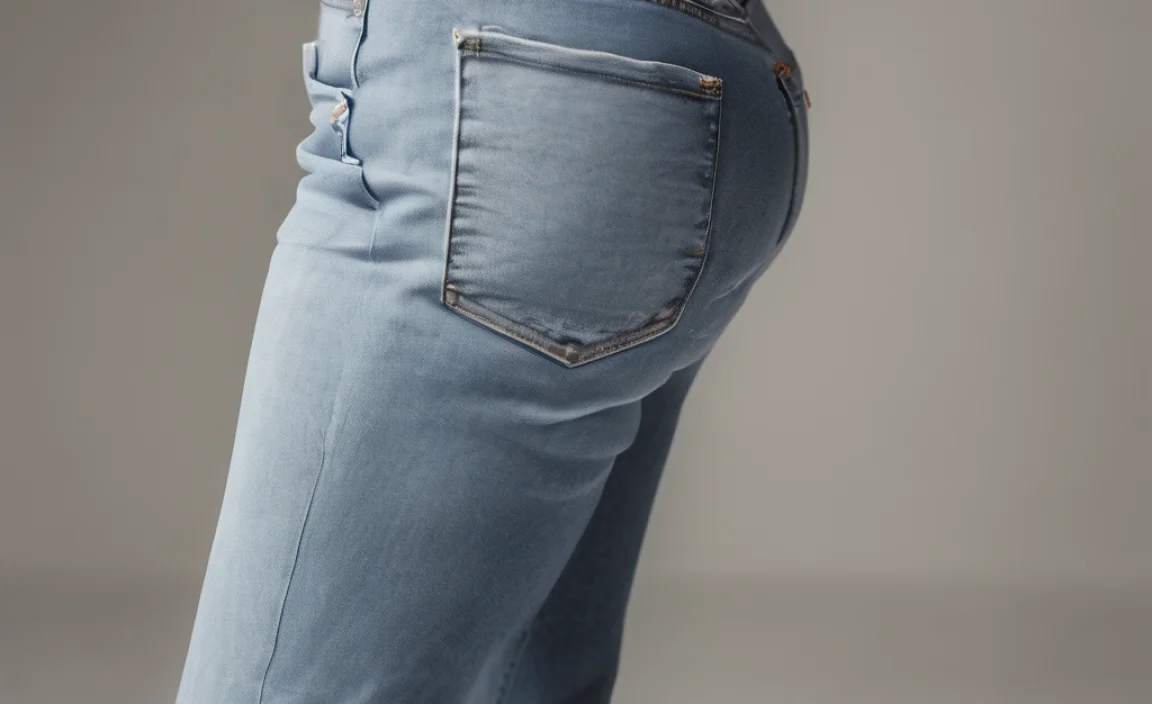
Let’s get started! This guide will walk you through the most common and versatile method: the classic double fold hem, with notes on how to adapt it for a frayed hem. This is a great way to ensure your jeans look polished and stay that way.
Step 1: Prepare Your Jeans and Workspace
First, make sure your mom jeans are clean. Washing and drying them first ensures you’re hemming them at their true collapsed length, as some fabrics can stretch or shrink. Lay them flat on a clean, well-lit surface.
Step 2: Determine Your Desired Length
Put on the mom jeans and the shoes you plan to wear with them most often. Stand in front of a mirror. Using your measuring tape or ruler, decide exactly where you want the new hem to fall. Common lengths for mom jeans are just above the ankle bone, right at the ankle, or slightly shorter for a cropped look.
Tip: You can fold the excess fabric up at the back of your leg with your hands to visualize the final length before marking. Keep the length consistent on both legs.
Step 3: Mark the Hem Line
While wearing the jeans, or by carefully laying them flat and measuring from the crotch seam down, mark your desired hem length on the outside of one leg. Use your fabric chalk or pen. Then, carefully unpin them (if wearing) and lay them flat. Measure the exact distance from this mark to the original hem. This measurement will be the same for the other leg. You’ll want to mark the new hem line on the inside of the leg for a cleaner sewn finish. For a double fold, remember you’ll need to fold up roughly 1 to 1.5 inches of fabric in total. Mark a line where the fabric will be cut, which should be about 1 inch below your desired finished hem line.
Example: If you want your finished hem to be 1 inch long, and you’re doing a double fold, you’ll need about 2 inches of fabric to fold. So, you’d mark your cut line 1 inch below where you want the final hem to sit.
Step 4: Cut Off the Excess Fabric
Using your sharp fabric scissors, carefully cut along the marked cut line. Take your time to ensure a straight cut. If you’re aiming for a frayed hem, you might still want to cut off the excess to a manageable length (e.g., 1 inch from the desired finished frayed edge) before proceeding to the fraying step.
Tip for Frayed Hems: If you want a significant raw edge, you might cut a bit more off, then unravel the denim threads. A good starting point for the cut is usually 1.5 to 2 inches above your desired final hem length.
Step 5: Create the Double Fold Hem (Sewn Method)
- First Fold: Take the cut edge of the fabric and fold it upwards towards the inside of the jeans by about ½ inch. Press this fold with an iron if desired, or simply use pins every few inches to hold it in place. Ensure the fold is even all the way around.
- Second Fold: Now, fold that first fold upwards again, by another ½ inch to 1 inch, depending on how wide you want your final hem to be. This second fold encloses the raw edge. Press this fold firmly with your iron. Pin it securely in place. If you want wider hems, simply adjust the measurements for your folds. For example, a 1-inch first fold and a 1-inch second fold create a substantial hem.
Step 6: Sew the Hem
You have two main options here:
Option A: Sewing by Machine
Set up your sewing machine with a needle appropriate for denim and matching or contrasting thread. Sew as close to the inner folded edge as possible, going all the way around the leg. Backstitch at the beginning and end to secure the thread. If your jeans have a thick seam on the original hem, you might need to sew on the inside of that seam to avoid bulk.
Option B: Sewing by Hand
Use a needle and thread. A backstitch or a whipstitch works well for hemming. Stitch close to the inner edge of the second fold. Make your stitches small and even for a neat finish, or slightly larger and more spaced for a casual look. Be sure to knot your thread securely at the beginning and end. Knot the thread inside the hem allowance so it’s not visible.
Tip for Preserving Original Hem Look: If you want the exterior to look exactly like the original, you can carefully remove the original hem stitch with a seam ripper, unfold the doubled hem, measure and cut, then re-fold and sew on that same line. This is more advanced but replicates factory hems.
Step 7: Finishing Touches (for sewn hems)
Once sewn, remove all the pins. Give the hem a final press with your iron to ensure it’s crisp and flat. Trim any loose threads.
Step 8: Repeating for the Frayed Hem
If you decided on a frayed hem:
- After cutting the fabric to your desired length (Step 4), you’ll have a raw edge.
- To create the fray, use tweezers or your fingers to gently pull out vertical threads from the cut edge. Work your way around the entire circumference of the leg.
- The more threads you pull, the wider and more pronounced the fray will be.
- To stop the fraying at your desired point, you can wash and dry the jeans. This will soften the frayed threads and make them look more natural. Some people also apply a small amount of fabric fray stopper liquid sparingly, if they want to limit further unraveling.
Important Note on Frayed Hems: The amount of fraying will increase with washing and wear. You can control this by how much thread you initially pull out and whether you choose to wash the jeans immediately after creating the fray.
Comparing Hemming Methods: Pros and Cons
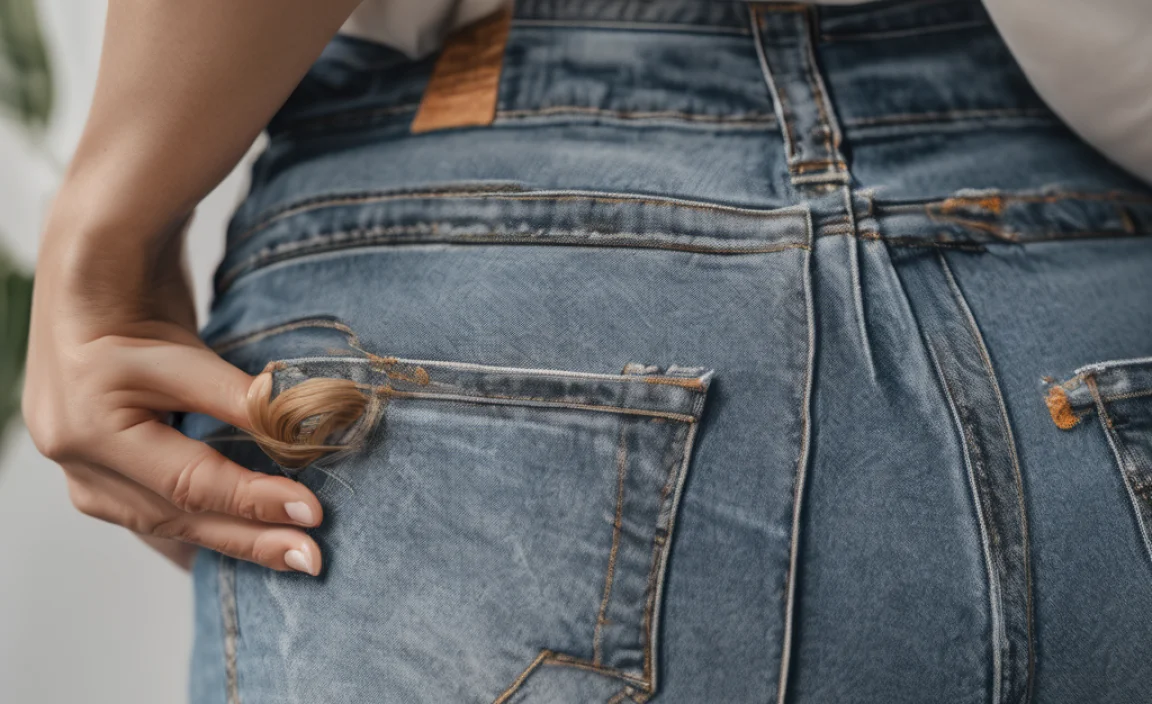
Choosing the right hemming method depends on your skill level, available tools, and the look you want to achieve. Here’s a quick comparison:
| Method | Pros | Cons | Best For |
|---|---|---|---|
| Classic Double Fold (Sewn) | Durable, neat finish, won’t fray, looks professional. | Requires sewing skills, takes more time. | Achieving a clean, long-lasting hem. |
| No-Sew (Hemming Tape) | Quick, easy, no sewing required, surprisingly strong. | May not be as durable as sewing over time, less professional appearance to some. | Beginners, quick alterations, no sewing machine access. |
| Frayed Hem | Trendy, stylish, casual look, relatively easy to achieve. | Can unravel further with washing, not a neat finish, may not suit all occasions. | Modernizing mom jeans, achieving an edgy, relaxed style. |
Tips for Perfect Mom Jean Hemming
Beyond the basic steps, a few pro tips can elevate your hemming game:
- Match Thread to Fabric: For a clean, almost invisible finish on the outside, use thread that closely matches your jeans’ warp and weft denim color. For a decorative, visible stitch (like on trucker jackets), choose a contrasting color.
- Use a Denim Needle: If using a sewing machine, a denim needle (size 100/16 or 110/18) is crucial. It’s stronger and sharper, designed to pierce through thick layers of denim without breaking. You can find good quality denim needles from brands like Schmetz.
- Press Your Folds: Using an iron to press each fold before pinning or sewing makes a huge difference in creating a crisp, even hem.
- Sew in a Straight Line: Practice sewing in a straight line on a scrap piece of denim first if you’re using a machine. For hand-sewing, focus on making consistent stitch lengths.
- Consider Stretch: Most mom jeans have some stretch. When measuring and hemming, be mindful that stretched fabric can look different once it relaxes. Always measure and mark when the jeans are in their natural, un-stretched state.
- Test on a Scrap: If you’re unsure about any step or technique, especially sewing or using hemming tape, grab an old scrap piece of similar fabric (or even an old pair of jeans destined for the donation pile) and practice the technique.
Frequently Asked Questions About Hemming Mom Jeans
Q1: How much fabric should I leave for hemming mom jeans?
This depends on the hem style. For a double fold, plan for at least 1 to 1.5 inches. For a single fold or simple raw edge, about ½ to 1 inch is usually enough. Always cut slightly more than you think you need, as you can trim more if necessary.
Q2: Can I hem mom jeans without a sewing machine?
Absolutely! You can hand-sew a hem with a needle and thread, or use no-sew hemming tape like Wonder Tape, which is ironed on. Both methods can produce excellent results for mom jeans.
Q3: How do I make my hemmed mom jeans look intentionally frayed?
After cutting your jeans to the desired length, use tweezers or your fingers to pick out vertical threads from the raw edge. Wash and dry the jeans to encourage natural fraying. You can also use fabric fray stop liquid sparingly to control how much they fray over time.
Q4: My mom jeans are a really thick denim. Will my needle break?
Thick denim can be tough on needles. Ensure you are using a heavy-duty needle designed for denim or jeans. These needles are thicker and stronger. If sewing by hand, use a sturdy needle and moderate pressure.
Q5: How do I ensure both legs are the same length?
The best way is to measure both legs from the crotch seam down to where you want the hem to be, or to lay the jeans flat and measure from a consistent point like the waistband or the bottom of the fly. Once you mark one leg, use that as your guide for the second leg, measuring from the same reference points.
Q6: Should I hem mom jeans before or after washing?
It’s best to wash and dry your mom jeans first. This is because denim can shrink or stretch. Hemming after washing ensures you’re working with the fabric’s final, stable size.
Conclusion
Hemming your mom jeans is a straightforward and rewarding DIY project that can instantly improve how your favorite denim fits and looks. Whether you prefer a clean, tailored finish, a trendy frayed edge, or a quick no-sew solution, these methods empower you to customize your jeans perfectly. By following these steps, you can achieve professional-looking results right at home, saving time and money. So, grab your scissors and thread, and get ready to give your beloved mom jeans a new, perfectly proportioned lease on life!



